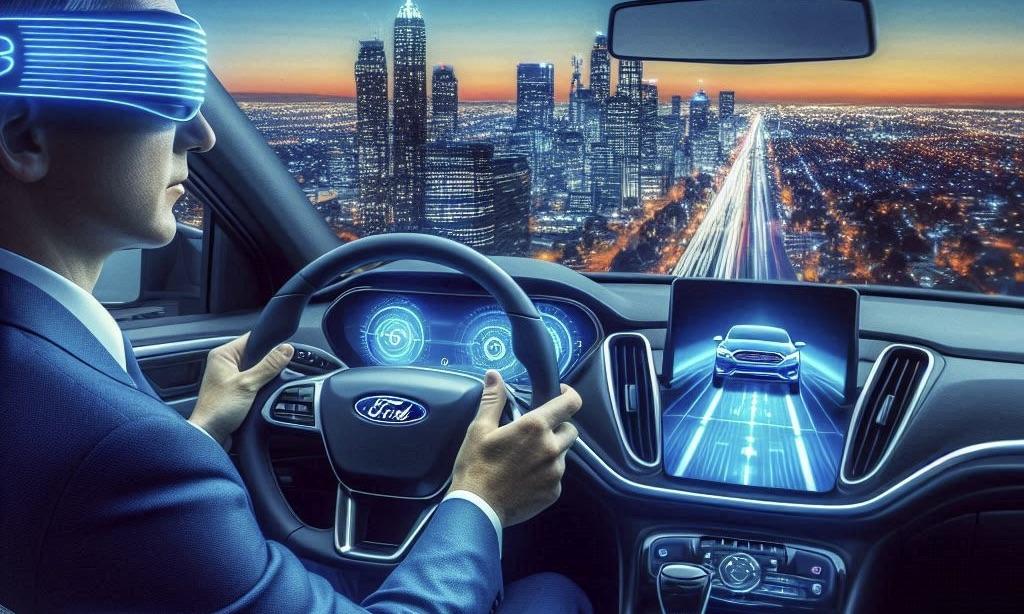Ford CEO Jim Farley announced the company's progress towards achieving Level 3 autonomous driving, allowing for hands-free and eyes-off-the-road operation, during a recent interview with Bloomberg TV.
Ford CEO Jim Farley Announces Progress Toward Level 3 Autonomous Driving, Enabling Hands-Free and Eyes-Off Operation
In a recent interview (via Electrek), Ford CEO Jim Farley addressed the American automaker's advancements in autonomous driving. He announced that the company had achieved Level 3 autonomy, allowing drivers to remove their hands from the wheel and their eyes from the road. However, it will be some time before Ford customers can experience it.
Autonomous driving remains a popular topic in EV innovation. Still, the development of self-driving vehicles is taking significantly longer than initially anticipated, much like the 1960s vision of a post-millennium future with flying cars.
While Tesla's 'Full-Self Driving' feature is not yet at the Level 4 standard and does not meet Level 3 by SAE standards, Mercedes-Benz stands out as the sole automaker currently providing Level 3 autonomy through its Drive Pilot ADAS. This feature is only authorized for use on specific highways in the U.S. at speeds below 40 mph.
At Level 3, the car assumes control and is responsible for any accidents if the driver removes their hands from the wheel and their eyes from the road. Most automakers, including Ford, have achieved Level 2 autonomous driving, which allows for hands-free operation while maintaining visual awareness.
Consumer Reports awarded Ford's BlueCruise the top position for driver assistance systems in 2023, surpassing GM's Super Cruise. Tesla secured the seventh position. Jim Farley recently updated the public on Ford's advancements in autonomous driving, revealing that they have reached Level 3 at the prototype stage.
Ford CEO Reveals Level 3 Autonomous Driving is Two Years Away, Promising Hands-Free Highway Travel
In a recent interview with Bloomberg TV, Farley disclosed that Ford has already conducted Level 3 autonomous driving testing and that the technology is approximately two years away from being implemented in passenger electric vehicles.
Farley stated, “We’re getting really close. We can do it now pretty regularly with a prototype, but doing it in a cost-effective way is just the progress we’re going to need to make. Level 3 autonomy will allow you to go hands and eyes off the road on the highway in a couple of years so then your car becomes like an office. You could do a conference call and all sorts of stuff.”
While Farley did not disclose specific details about Ford's roadmap to Level 3 autonomous driving or whether the automaker is exploring LiDAR vision camera technologies or both, it's clear that Ford is committed to the journey. In 2022, Ford established its autonomous driving arm, Argo AI, with the understanding that full self-driving was still a considerable distance away.
Given the rapid success of hands-free driving through Level 2 ADAS, Level 3 is a logical progression for the industry and is significantly more believable than the full autonomy other manufacturers have pledged. Ford's capacity to produce a mass-market electric vehicle with Level 3 autonomous driving capabilities will be the primary focus of attention in 2026.
Photo: Microsoft Bing



 Mizuho Raises Broadcom Price Target to $450 on Surging AI Chip Demand
Mizuho Raises Broadcom Price Target to $450 on Surging AI Chip Demand  Nvidia Develops New Location-Verification Technology for AI Chips
Nvidia Develops New Location-Verification Technology for AI Chips  Trump Criticizes EU’s €120 Million Fine on Elon Musk’s X Platform
Trump Criticizes EU’s €120 Million Fine on Elon Musk’s X Platform  Australia Enforces World-First Social Media Age Limit as Global Regulation Looms
Australia Enforces World-First Social Media Age Limit as Global Regulation Looms  Moore Threads Stock Slides After Risk Warning Despite 600% Surge Since IPO
Moore Threads Stock Slides After Risk Warning Despite 600% Surge Since IPO  EU Court Cuts Intel Antitrust Fine to €237 Million Amid Long-Running AMD Dispute
EU Court Cuts Intel Antitrust Fine to €237 Million Amid Long-Running AMD Dispute  Trump Signs Executive Order to Establish National AI Regulation Standard
Trump Signs Executive Order to Establish National AI Regulation Standard  Evercore Reaffirms Alphabet’s Search Dominance as AI Competition Intensifies
Evercore Reaffirms Alphabet’s Search Dominance as AI Competition Intensifies  Trello Outage Disrupts Users as Access Issues Hit Atlassian’s Work Management Platform
Trello Outage Disrupts Users as Access Issues Hit Atlassian’s Work Management Platform  U.S. Greenlights Nvidia H200 Chip Exports to China With 25% Fee
U.S. Greenlights Nvidia H200 Chip Exports to China With 25% Fee  SpaceX Insider Share Sale Values Company Near $800 Billion Amid IPO Speculation
SpaceX Insider Share Sale Values Company Near $800 Billion Amid IPO Speculation  SpaceX Edges Toward Landmark IPO as Elon Musk Confirms Plans
SpaceX Edges Toward Landmark IPO as Elon Musk Confirms Plans  Microsoft Unveils Massive Global AI Investments, Prioritizing India’s Rapidly Growing Digital Market
Microsoft Unveils Massive Global AI Investments, Prioritizing India’s Rapidly Growing Digital Market  SK Hynix Shares Surge on Hopes for Upcoming ADR Issuance
SK Hynix Shares Surge on Hopes for Upcoming ADR Issuance  Apple App Store Injunction Largely Upheld as Appeals Court Rules on Epic Games Case
Apple App Store Injunction Largely Upheld as Appeals Court Rules on Epic Games Case 































